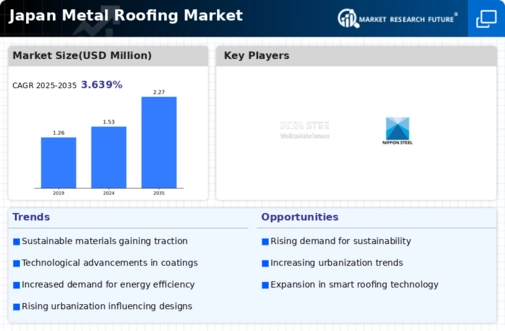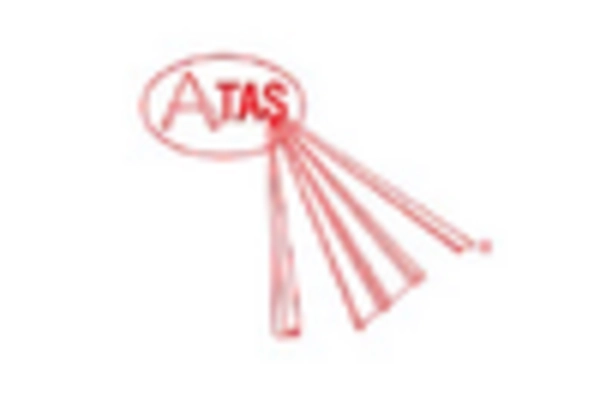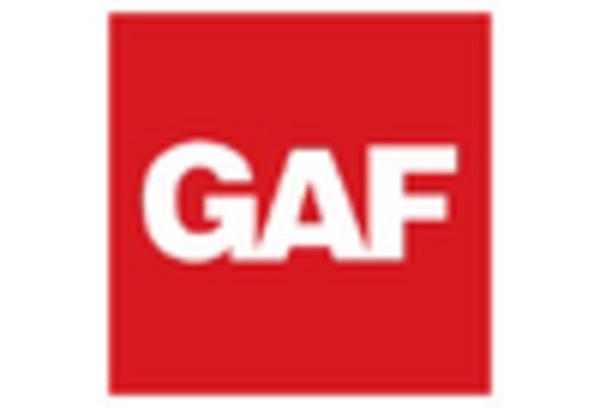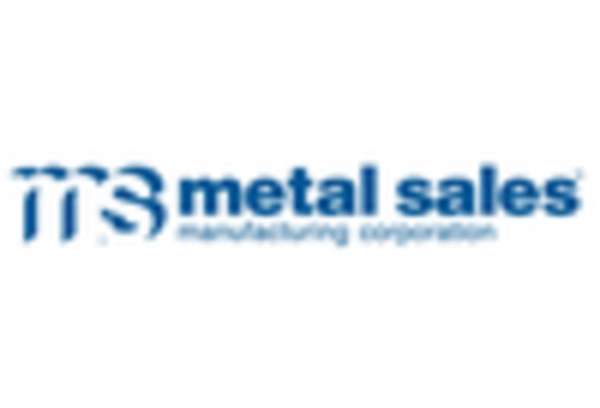Rising Demand for Energy Efficiency
The metal roofing market in Japan experiences a notable increase in demand for energy-efficient building materials. As energy costs continue to rise, homeowners and commercial builders are increasingly seeking roofing solutions that offer superior insulation and reflectivity. Metal roofs, known for their ability to reflect solar heat, can reduce cooling costs by up to 25%. This trend aligns with Japan's commitment to reducing carbon emissions and enhancing energy efficiency in buildings. The government has introduced various incentives to promote energy-efficient construction, further driving the adoption of metal roofing solutions. Consequently, the metal roofing market is poised for growth as consumers prioritize sustainability and cost savings.
Government Regulations and Standards
The metal roofing market in Japan is significantly influenced by stringent government regulations and building standards aimed at enhancing safety and environmental sustainability. Recent legislation mandates the use of fire-resistant materials in construction, which positions metal roofing as a favorable option due to its non-combustible properties. Additionally, the government encourages the use of recyclable materials in construction, aligning with the metal roofing market's characteristics. Compliance with these regulations not only ensures safety but also promotes the adoption of metal roofs among builders and homeowners. As a result, the market is likely to see an uptick in demand as stakeholders seek to adhere to these evolving standards.
Aging Population and Renovation Trends
Japan's aging population is influencing the metal roofing market as more homeowners seek to renovate existing properties to improve safety and energy efficiency. Older homes often require upgrades to meet modern standards, and metal roofing presents an attractive option due to its durability and low maintenance requirements. Renovation projects are increasingly focusing on energy-efficient solutions, with metal roofs offering significant advantages in terms of insulation and longevity. This demographic shift is likely to drive demand within the metal roofing market, as homeowners invest in renovations that enhance property value and reduce long-term costs.
Innovations in Metal Roofing Materials
The metal roofing market in Japan is witnessing innovations in materials and coatings that enhance performance and aesthetic appeal. Advances in technology have led to the development of lightweight, corrosion-resistant metals that offer improved durability and longevity. Additionally, new coatings provide enhanced thermal performance and color retention, making metal roofs more attractive to consumers. These innovations are likely to appeal to both residential and commercial sectors, as they address concerns regarding maintenance and energy efficiency. As a result, the metal roofing market is expected to benefit from these advancements, attracting a broader customer base seeking modern and efficient roofing solutions.
Urbanization and Infrastructure Development
Japan's ongoing urbanization and infrastructure development initiatives are pivotal drivers for the metal roofing market. As cities expand and new residential and commercial projects emerge, the demand for durable and low-maintenance roofing solutions increases. Metal roofs, known for their longevity and resistance to harsh weather conditions, are becoming the preferred choice for new constructions. The government has allocated substantial budgets for urban development, which includes the construction of new buildings that often utilize metal roofing materials. This trend suggests a robust growth trajectory for the metal roofing market as urban planners and developers recognize the benefits of metal roofs in modern architecture.

















Leave a Comment